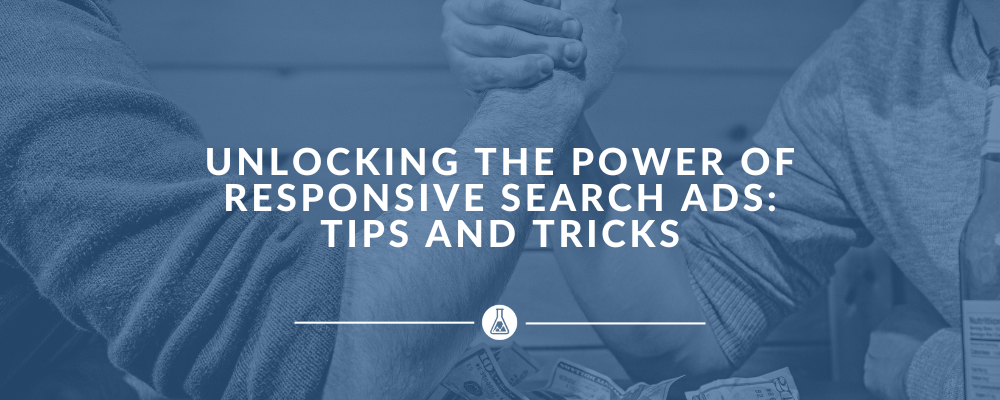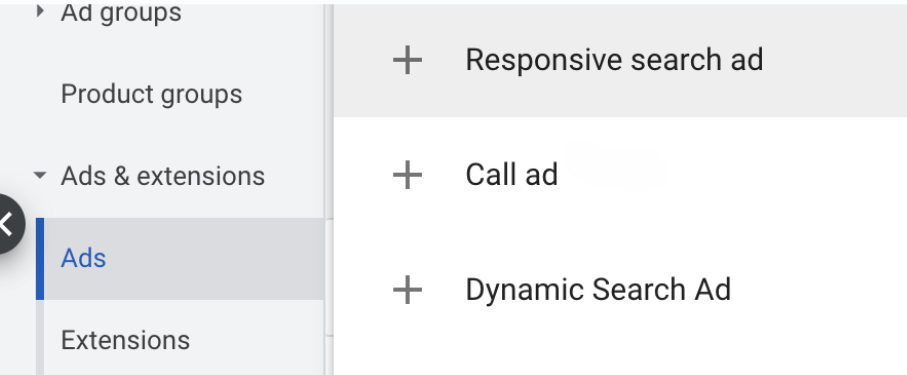Remember the days when Expanded Text Ads (ETAs) were your go-to? Well, those days are gone! In June 2022, ETAs took their final bow, handing over the reins to Responsive Search Ads (RSAs).
RSAs are a game-changer—they allow you to provide multiple headlines and descriptions, which Google then smartly combines to create the most compelling ad based on search queries and other advanced data. It’s a powerful tool, but with all that flexibility, things can get a bit overwhelming.
Dive into our comprehensive guide on Responsive Search Ads. We’ll break down exactly what they are, how to create them. Let’s get started.
Table of Contents
What Are Responsive Search Ads?
Creating ads that always connect with your audience can be tough, especially when people search for different things. Traditional ads often miss the mark because they can’t adjust to what each person is looking for.
Imagine you’re a fitness coach launching an online program. You have several great ideas for promoting it, like “Get Fit in 30 Days,” “Work Out from Home,” and “Join Our Online Community.” You also want to highlight things like personalized plans and expert advice. But how do you know which combination of these messages will work best? Testing each one by hand takes too much time and effort.
That’s where Responsive Search Ads (RSAs) come in. With RSAs, you can add multiple headlines and descriptions, like “Transform Your Body Fast” or “Access Expert Tips Online.” Google Ads will then mix and match these to find the best combination for each user’s search.
For example, if someone searches for a quick workout, Google might show them “Get Fit in 30 Days” along with “No Gym Needed—Start Now!”
RSAs save you time and help make sure your ads are always relevant and effective.
How Do Responsive Search Ads Work: A Deep Dive into the Concept and Algorithm
If you’re looking to understand how responsive search ads (RSAs) can transform your Google Ads strategy, you’re in the right place. Let’s dive into the specifics of how RSAs operate and the algorithm that makes them so effective.
At the heart of RSAs is the concept of adaptability and optimization.
You provide Google Ads with up to 15 headlines and 4 descriptions, creating a pool of elements that the algorithm uses to dynamically generate up to 43,680 ad combinations!!
The goal is simple🏆: match the most relevant ad variation to each user’s search query, device, location, and even the time of day, ensuring that your message resonates with their immediate needs.
The process behind this involves Google’s machine learning algorithm, which constantly collects data on user interactions like clicks, impressions, and engagement metrics. With each ad served, the algorithm tests various combinations of your provided headlines and descriptions, analyzing which ones perform best based on real-time user behavior. This continuous testing allows Google to identify the top-performing combinations and show them more frequently, maximizing the likelihood of engagement.
As more data flows in, the algorithm refines its choices, adapting to new trends and shifting user preferences, so your ads are always optimized for peak performance.
To make the most of RSAs, craft diverse yet targeted headlines and descriptions that highlight different aspects of your offering.
Why Use Responsive Search Ads?
Reaching the right audience with the perfect message is tougher than it seems. Standard ads often fall short because they can’t adjust to the variety of ways people search online.
Responsive Search Ads (RSAs) are designed to tackle this exact issue. By letting Google’s machine learning do the work, RSAs dynamically adjust your ads to match what users are looking for in real time.
This means every ad served is optimized to be the most relevant version possible, boosting your chances of engagement.
Instead of static messages, RSAs allow your ads to evolve based on actual performance data, adapting to different search queries, user behavior, and market trends.
This level of customization ensures your ads are always competitive, capturing attention and driving results more effectively than traditional ads ever could.
What Are the Character Counts for Responsive Search Ads?
Responsive Search Ads (RSAs) are structured with specific character limits to help your ads perform at their best.
For headlines, you have up to 15 options, each capped at 30 characters, giving you the flexibility to experiment with different phrases and keywords.
Descriptions allow up to 4 variations, each with a maximum of 90 characters, which lets you expand on key points, highlight benefits, and provide compelling reasons for users to engage.
Additionally, you can customize the display URL with up to 2 optional paths, each limited to 15 characters, making the URL more relevant and attractive to potential customers.
These character limits are designed to balance creativity with precision, ensuring that your ads are concise yet effective, allowing Google’s machine learning to dynamically serve the best combinations to match user searches.
How to Create Responsive Search Ads in Google Ads?
Creating Responsive Search Ads (RSAs) in Google Ads is straightforward but requires a strategic approach to maximize their effectiveness.
Start by logging into your Google Ads account and navigating to the campaign where you want to add the RSA. Click on the “Ads & Extensions” tab, then select “+” to create a new ad and choose “Responsive Search Ad” from the list of options.
In the ad creation window, you’ll be prompted to enter up to 15 headlines and 4 descriptions. Focus on varying your headlines to cover different selling points, keywords, and calls to action. Keep each headline concise and impactful, aiming for the 30-character limit.
For descriptions, craft messages that expand on your headlines, providing more detail or highlighting unique benefits, with each one up to 90 characters.
After inputting your headlines and descriptions, take advantage of the pinning feature if there are specific messages you want to control the placement of, like ensuring a call to action always appears in the first position.
Review the ad strength indicator provided by Google to see suggestions for improving ad performance and to ensure you’re providing enough variation.
Finally, save your ad and monitor its performance. Google Ads will automatically test different combinations of your headlines and descriptions, optimizing based on real-time data.
We live, breathe & Dream Paid Traffic
5 Responsive Search Ad Tips and Best Practices for Maximum Performance
Responsive Search Ads (RSAs) offer a dynamic way to engage users, but getting the best results requires some strategy. Here are five key tips and best practices to ensure your RSAs perform at their peak.
- First, diversify your headlines and descriptions. Avoid redundancy by creating headlines that highlight different aspects of your product or service, such as benefits, offers, or unique features. This gives Google more options to test and match with search queries, increasing the chances of delivering the most relevant message.
- Second, utilize high-performing keywords. Incorporate top keywords from your ad groups into your headlines and descriptions. This not only helps with ad relevance but also improves your Quality Score, which can lead to better ad placements and lower costs per click.
- Third, leverage pinning wisely. While pinning a headline or description to a specific position can be helpful for controlling your message, over-pinning can limit Google’s ability to test different combinations. Use pinning sparingly to maintain flexibility while ensuring key messages appear where they’re most impactful.
- Fourth, monitor and adapt based on ad strength feedback. Google provides an ad strength indicator that suggests ways to improve your RSA. Pay attention to this feedback, as ads with higher ad strength are more likely to perform well. Continuously refine your headlines and descriptions to enhance ad strength and drive better results.
- Finally, test and optimize continuously. RSAs are not set-and-forget; they require ongoing monitoring. Regularly check performance metrics like click-through rates and conversion rates, and adjust your ad content based on what’s working.
Implementing these best practices will help you fully leverage the power of RSAs, driving better engagement and maximizing your advertising ROI.
Summary
Responsive Search Ads are all about staying flexible and mixing things up. Keep your headlines and descriptions varied, use your best keywords, and pin only when it really matters—let Google handle the rest. Pay attention to the ad strength suggestions from Google, and keep refining your ads based on what’s actually working. RSAs aren’t a set-and-forget thing, so check in regularly, see what’s getting results, and make small adjustments along the way.
Keep it simple, stay on top of your ads, and let Google help you connect with your audience more effectively.
Check out more blog posts:

Technical SEO: A Complete Guide to Optimizing Your Website for Search Engines





